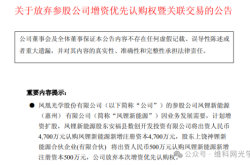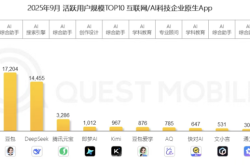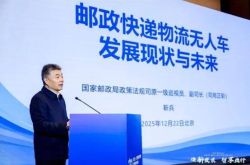“Global ranking” updated, has China’s “chip” industry breathed a sigh of relief?
![]() 08/14 2024
08/14 2024
![]() 644
644
The storm has passed, and the decline of domestic chip industry is a thing of the past.
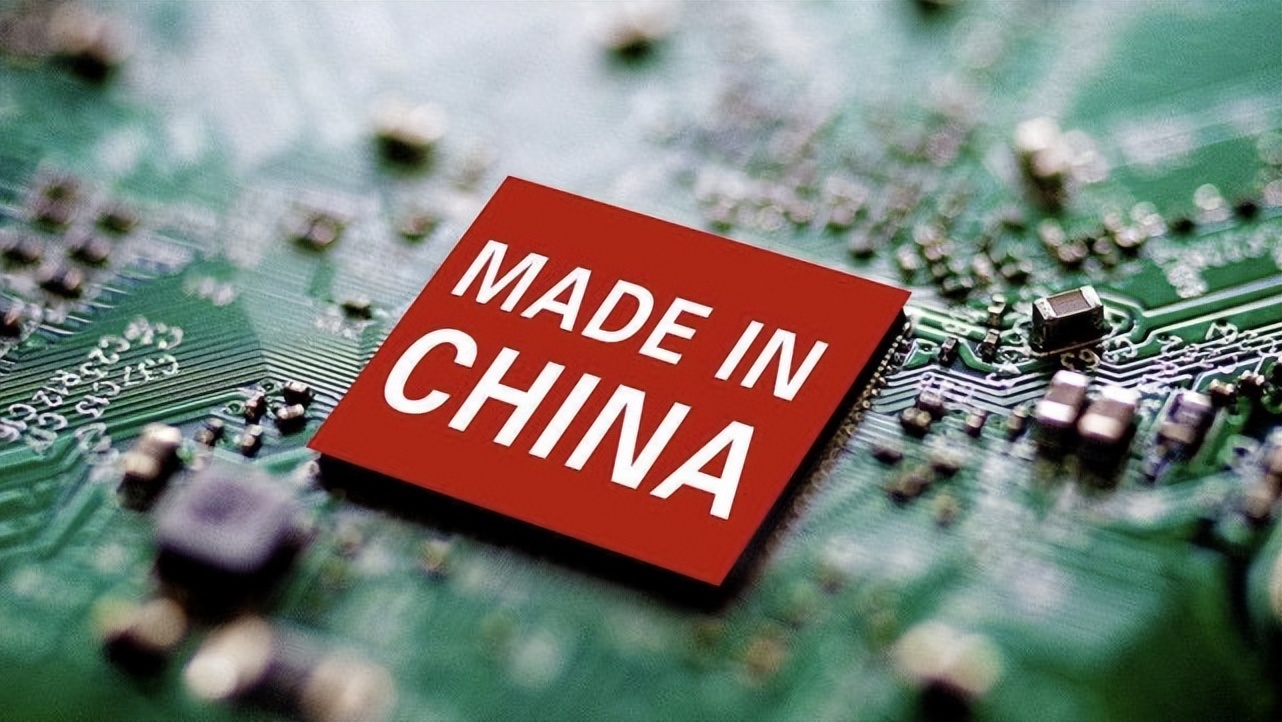
Recently, SMIC and Hua Hong Semiconductor, two major domestic wafer foundry giants (hereinafter referred to as “SMIC” and “Hua Hong”), have successively released their financial reports for the second quarter of 2024. In terms of revenue, SMIC achieved sales revenue of US$1.9013 billion (approximately RMB 13.635 billion) in the second quarter, representing an 8.6% quarter-on-quarter increase and a 21.8% year-on-year increase.
Hua Hong Semiconductor maintained its sixth position, with revenue also steadily growing. The company achieved sales revenue of US$478.5 million in the second quarter, a 4.0% quarter-on-quarter increase. Furthermore, thanks to increased customer payments, the company's net cash flow from operating activities in the second quarter amounted to US$96.9 million, a 138.3% quarter-on-quarter increase.
Compared to the past, China’s “chip” industry has achieved self-surpassal in revenue in the second quarter of this year. However, when competing comprehensively with other wafer foundry giants, can China’s “chip” industry still secure victory?
China’s “Chip” vs Overseas “Chip”
In the second quarter, leading global wafer foundries also released their financial reports.
The financial reports show that in the second quarter, TSMC, Samsung Electronics, UMC, and GlobalFoundries achieved revenues of US$20.8 billion, US$4.96 billion, US$1.754 billion, and US$1.63 billion, respectively. By comparison, SMIC maintained its third position globally with a revenue of US$1.9013 billion, while Hua Hong ranked sixth.
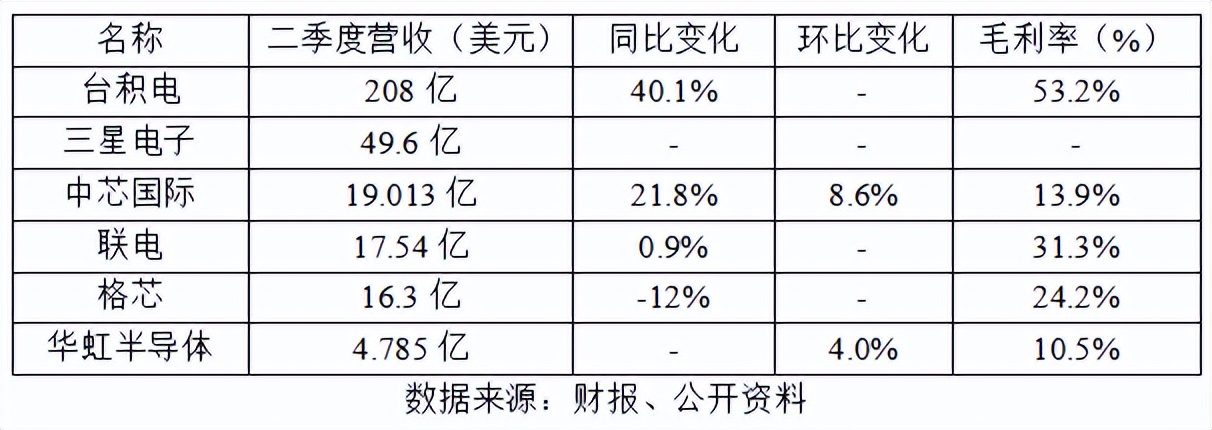
In terms of revenue performance, there is still a significant gap between SMIC and TSMC and Samsung Electronics. Considering the revenue growth rate, TSMC achieved a 40.1% year-on-year increase in revenue in the second quarter, higher than SMIC's 21.8%. It is evident that the revenue gap between the top three continues to widen.
In terms of gross margin, TSMC, which ranks first, achieved net income attributable to shareholders of NT$247.85 billion in the second quarter, a year-on-year increase of 36.3% and a quarter-on-quarter increase of 9.9%. The gross margin was approximately NT$358.1 billion, or 53.2%, significantly exceeding market expectations.
In comparison, SMIC's gross margin in the second quarter was 13.9%, with a net profit of US$164.6 million (approximately RMB 1.18 billion), a 129.2% quarter-on-quarter increase but a 59.1% year-on-year decrease. SMIC also lags behind TSMC, the top-tier player, in terms of profitability.
UMC, ranked fourth, achieved a new 15-year high in net profit as a typical mature process foundry enterprise. The financial report data shows that net profit attributable to the parent company in the second quarter reached NT$11.943 billion, while the gross margin exceeded 30%, reaching 31.3%.
GlobalFoundries, ranked fifth, achieved a gross margin of 24.2% in the second quarter, with a net profit of US$155 million, a year-on-year decline of 35% but a quarter-on-quarter increase of 16%.
Similarly, focusing on mature processes, Hua Hong achieved a gross margin of 10.5% in the second quarter of this year, with net income attributable to shareholders of US$6.673 million, a year-on-year decrease of 91.5% and a quarter-on-quarter decrease narrowed to 79.0%. Hua Hong also lags behind GlobalFoundries and UMC in the second tier.
The primary reasons behind these gaps lie in technological and product differences. Since TSMC achieved mass production of 7-nanometer processes, revenues from more advanced processes of 7 nanometers and below have rapidly increased, accounting for 67% of total revenue in the second quarter, while traditional processes only accounted for 33%.
In terms of new capacity planning, UMC has focused on the construction of its P6 plant in Southern Taiwan Science Park and its P3 plant in Singapore. It is reported that mass production at the P3 plant has been postponed to 2026, with a primary focus on 22~28nm processes. Meanwhile, GlobalFoundries also intends to strengthen its capacity for 14nm and above mature processes.
SMIC primarily focuses on the mid-range processes of 40nm and 28nm, while Hua Hong's process nodes are within the mature process range of 55nm and below, as well as in specialized process areas.
As we all know, the pricing power and significant portion of profits in the chip foundry sector concentrate more on advanced processes, decreasing as the process nodes increase. Product and technological differences extend to downstream applications such as smartphones, industrial and automotive, consumer electronics, IoT, etc., making it difficult for China’s “chip” industry to reap the benefits.
It is evident that in the competition for key technologies, SMIC and Hua Hong have narrowed the gap with GlobalFoundries and UMC in the second tier but still lag far behind TSMC and Samsung in the top tier. In terms of profitability, China’s “chip” industry also ranks towards the bottom among the global leaders.
Semiconductors “entering a golden age”; SMIC and Hua Hong “hit the mark”
Despite disadvantages in technology and profitability, the overall revenue of SMIC and Hua Hong still showed significant growth in the second quarter. Among the leading wafer foundry vendors, including TSMC, UMC, GlobalFoundries, Powerchip, and Vanguard, all except GlobalFoundries reported positive revenue growth in the second quarter.
Simultaneously, downstream markets such as consumer electronics, industrial, automotive, and computing segments have seen notable demand growth, with revenue increasing quarter-on-quarter by 3.6%, 7.9%, and 22.9%, respectively. Rising downstream demand is bound to drive up chip production and sales volumes.
Driven by the recovery in downstream consumer electronics, automotive, and other sectors, as well as the resilience of the semiconductor industry itself, the sector is gradually emerging from the trough and entering a recovery phase. Since opportunities are reserved for those who are prepared, SMIC and Hua Hong need to seize the trend and “hit the mark” during this industry recovery.
In the past, SMIC's inventory has remained high, but in the second quarter of this year, its accounts receivable reached US$1.24 billion, a 14.6% quarter-on-quarter increase, likely due to inventory reduction.
There are two primary ways to reduce inventory: either through price cuts to sell off excess products or by extending payment terms to customers. The former helps accelerate cash flows and boost revenue, while the latter may increase accounts receivable but helps protect market share and improve customer retention rates. Both approaches are currently in high demand for SMIC.
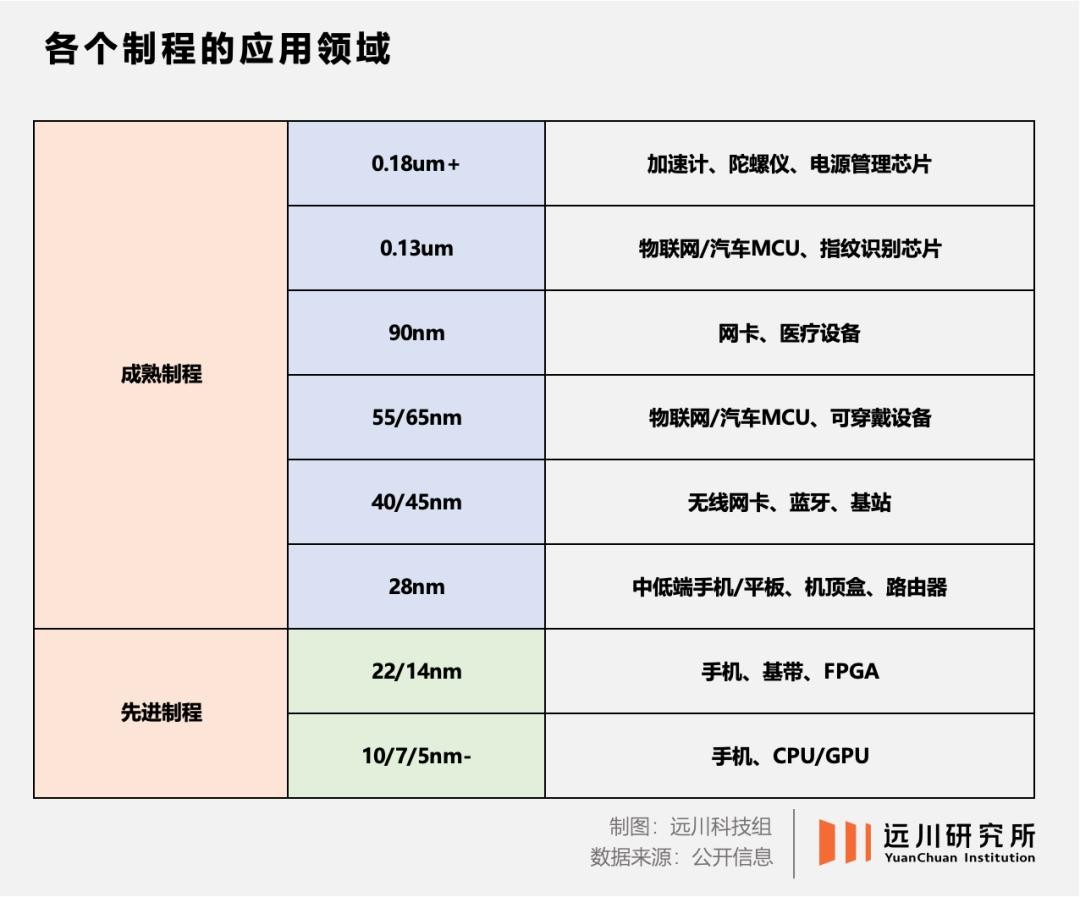
Image source: Yuanchuan Research Institute
This trend presents an excellent opportunity for wafer fabs such as SMIC and Hua Hong, which focus on mid-range and mature processes. SMIC has also adjusted its supply pattern at this time, shifting its expansion focus from 8-inch wafers to 12-inch wafers (used in smartphones, PCs, tablets, servers, gaming, automotive, and other downstream applications).
Hua Hong's primary foundry products on its embedded non-volatile memory process platform also focus on MCUs (subdivided into automotive MCUs, industrial control MCUs, consumer MCUs, etc., based on application fields) and smart card chips.
Since these foundry products have high added value, their selling prices increase alongside market demand growth. With SMIC and Hua Hong operating at full capacity for several consecutive months, their willingness to negotiate price reductions has diminished, leaving more profit margins for the fabs.
As the semiconductor industry recovers, SMIC and Hua Hong have promptly addressed inventory issues and adjusted their supply patterns to adapt to market changes, achieving better-than-expected market performance. This is commendable. However, from a macro perspective, competition and elimination in the semiconductor industry have always been long-term processes, and SMIC and Hua Hong, amidst the turbulence, must remain vigilant and forge ahead.
The road ahead for China’s “chip” industry remains long and challenging
Currently, the semiconductor industry has entered a recovery phase, but a long journey still awaits SMIC and Hua Hong.
In the past, not only UMC, SMIC, GlobalFoundries, and Hua Hong reduced prices, but TSMC and Samsung, with their advanced processes, also lowered prices for mature process wafers, contributing to last year's intense price war trend.
Although this was a pragmatic approach to maximizing wafer fab utilization, Hua Hong and SMIC managed to maintain volumes but lost profits amidst the competition among mainstream fabs to “trade price for volume.”
This suggests that price competition is not the optimal solution, and the ultimate competition will ultimately return to technology and process excellence.
Although SMIC has entered the advanced realm of sub-10nm processes, mass production has yet to commence. This final step, akin to the last mile of a marathon, is crucial yet challenging.
This leap is not only necessary for enterprises like SMIC and Hua Hong, who are highly anticipated in China, but also for the entire semiconductor industry to advance.
With the first half of the design and development process completed, only manufacturing remains. The bottlenecks in this stage lie in EDA software (Electronic Design Automation software) and materials and equipment, particularly extreme ultraviolet lithography machines. These are also the two “trump cards” the United States holds when pressuring China’s integrated circuit industry.
Apart from manufacturing, China's semiconductor industry faces obstacles in the following areas: a lack of IDM-type enterprises that can stand out in the global market, i.e., enterprises encompassing all production stages; and a shortage of talent, particularly high-end talent with comprehensive management capabilities.
Faced with known challenges and long-term difficulties, China’s “chip” industry can only rise to the occasion.
The “self-surpassal” in revenue in the second quarter is just the beginning. We cannot overlook the harshness of international competition. How to establish a firm footing and build advantages is a long-term topic. We look forward to the day when “China Chip” truly becomes a pillar of the global technology industry, contributing significantly to human technological progress.

